LLMs Paper - Can Generalist Foundation Models Outcompete Special-Purpose Tuning? Case Study in Medicine
- Can Generalist Foundation Models Outcompete Special-Purpose Tuning? Case Study in Medicine
Can Generalist Foundation Models Outcompete Special-Purpose Tuning? Case Study in Medicine
用 prompt+logprobs+n 调出了一个高分医学模型
Abstract
Generalist foundation models such as GPT-4 have displayed surprising capabilities in a wide variety of domains and tasks.
Yet, there is a prevalent assumption that they
cannot match specialist capabilities without intensive training of models with specialty knowledge.- For example, most explorations to date on medical competency benchmarks have leveraged domain-specific training, as exemplified by efforts on BioGPT and Med-PaLM.
We build on a prior study of the specialist capabilities of GPT-4 on medical challenge benchmarks in the absence of special training.
In distinction to the intentional use of simple prompting to highlight the model’s out- of-the-box capabilities, we perform a systematic exploration of prompt engineering to boost performance.
We find that prompting innovation can unlock deeper specialist capabilities and show that GPT-4 easily tops prior leading results for medical question-answering datasets.
The prompt engineering methods we explore are general purpose, and make no specific use of domain expertise, removing the need for expert-curated content.
Our experimental design carefully controls for overfitting during the prompt engineering process.
As a culmination of the study, we introduce
Medprompt, based on a composition of several prompting strategies.Medpromptgreatly enhances GPT-4’s performance and achieves state of the art results on all nine of the benchmark datasets in theMultiMedQAsuite.The method outperforms state-of-the-art specialist models such as
Med-PaLM 2by a large margin with an order of magnitude fewer calls to the model. Steering GPT-4 withMedpromptachieves a 27% reduction in error rate on theMedQAdataset (USMLE exam) over the best methods to date achieved with specialist models, and surpasses a score of 90% for the first time. Moving beyond medical challenge problems, we show the power ofMedpromptto generalize to other domains and provide evidence for the broad applicability of the approach via studies of the strategy on competency exams in electrical engineering, machine learning, philosophy, accounting, law, nursing, and clinical psychology.
1 Introduction
A long-term aspiration in AI research is to develop
principles of computational intelligenceand to harness these to buildlearning and reasoning systemsthat can perform general problem solving across a diversity of tasks [^21],[^22].In line with this goal, LLMs / foundation models, such as GPT-3 [^3] and GPT-4 [^24], have demonstrated surprising competencies on a broad swath of tasks
without requiring heavy specialized training[4].These models build on the text-to-text paradigm [^31] with investments in compute and data to learn at scale from indiscriminate consumption of large amounts of public web data.
Some of these models are tuned via a learning objective to perform general instruction-following via prompts.
(a) Comparison of performance on MedQA. (b) GPT-4 with Medprompt achieves SoTA on a wide range of medical challenge questions.
A core metric for characterizing the performance of foundation models is the accuracy of next word prediction.
Accuracy with next word prediction is found to
increase with scale in training data, model parameters, and compute, in accordance with empirically derived “neural model scaling laws”[^3], [^12].However, beyond predictions of scaling laws on basic measures such as next word prediction, foundation models show the sudden emergence of numerous problem-solving capabilities at different thresholds of scale [^33], [^27], [^24]. 基础模型在不同规模阈值下突然出现了许多问题解决能力。
Despite the observed emergence of sets of general capabilities, questions remain about whether truly exceptional performance can be achieved on challenges within specialty areas like medicine in the absence of extensive specialized training or fine-tuning of the general models.
Most explorations of foundation model capability on biomedical applications rely heavily on
domain-and-task-specific fine-tuning.With first-generation foundation models, the community found an unambiguous advantage with domain-specific pretraining, as exemplified by popular models in biomedicine such as PubMedBERT [^10] and BioGPT [^19]. But it is unclear whether this is still the case with modern foundation models pretrained at much larger scale.
We focus in this paper on
steering foundation models via prompt engineeringto excel on a set of medical challenge benchmarks.Med-PaLM 2attains competitive results onMedQAand other medical challenge problems, via expensive, task-specific fine-tuning of the general PaLM [^6] foundation model [^29], [^30].In addition to reliance on fine-tuning of the base PaLM model, results on the medical benchmarks for
Med-PaLM 2were generated via use of sophisticated, complex prompting strategies, leveraging exemplars crafted by experts.- For example, many of the answers rely on an elaborate two-stage prompt scheme of 44 calls for answering each question.
Shortly after GPT-4 was made public in March 2023, several co-authors of this study showed that the model had impressive biomedical competencies “out-of-the-box” on medical challenge bench- marks. To demonstrate the latent power of GPT-4 on specialty medical expertise, the co-authors purposefully employed a rudimentary prompting strategy [^23]. Despite the strong results demon-strated in that study, questions remain about the depth of GPT-4’s domain-specific capabilities in the absence of additional special training or tuning.
We present results and methods of a case study on steering GPT-4 to answer medical challenge questions with innovative prompting strategies.
We include a consideration of best practices for studying prompting in an evaluative setting, including the holding out of a true eyes-off evaluation set.
We discover that GPT-4 indeed possesses deep specialist capabilities that can be evoked via prompt innovation.
The performance was achieved via a systematic exploration of prompting strategies.
As a design principle, we chose to explore prompting strategies that were inexpensive to execute and not customized for the benchmarking workload.
We converged on a top prompting strategy for GPT-4 for medical challenge problems, which we refer to as
Medprompt.Medpromptunleashes medical specialist skills in GPT-4 in the absence of expert crafting, easily topping existing benchmarks for all standard medical question-answering datasets.- The approach outperforms GPT-4 with the simple prompting strategy and state-of-the-art specialist models such as
Med-PaLM 2by large margins. On theMedQA dataset (USMLE exam),Medpromptproduces a 9 absolute point gain in accuracy, surpassing 90% for the first time on this benchmark.
As part of the investigation, we undertake a comprehensive ablation study that reveals the relative significance for the contributing components of
Medprompt.We discover that a combination of methods, including in-context learning and chain-of-thought, can yield synergistic effects.
Perhaps most interestingly, we find that the best strategy in steering a generalist model like GPT-4 to excel on the medical specialist workload that we study is to use a generalist prompt.
We find that GPT-4 benefits significantly from being allowed to design its prompt, specifically with coming up with its own chain-of-thought to be used for in-context learning.
This observation echoes other reports that GPT-4 has an emergent self-improving capability via introspection, such as self-verification [^9].
We note that the automated chain-of-thought reasoning removes dependency on special human expertise and medical datasets. Thus, despite the name
Medprompt, extending from the framing context and research trajectory of the investigation of the capabilities of GPT-4 on medical challenge problems, the methodology doesn’t include any components specifically oriented towards medicine.As we explore in Section 5.3, the approach can be applied readily to other domains.
We present details on
Medpromptto facilitate future studies on steering generalist foundation models to provide specialist advice.
2 Background
2.1 Foundation Models on Medical Challenge Problems
In the era of first-generation foundation models,
limited model size and computational resourcesmade domain-specific pretraining advantageous.Models such as PubMedBERT [^10], BioLinkBERT [^37], DRAGON [^36], BioGPT [^19], and BioMedLM [^2] were pretrained with self-supervised objectives using domain-specific data sources, such as the PubMed corpus and UMLS knowledge graph.
Despite their small size and limited computational power, these models demonstrate strong performance in biomedical NLP tasks. More powerful, general-domain foundation models have demonstrated significantly elevated performance in medical challenges without requiring domain-specific pretraining.
Several studies have explored the performance of generalist foundation models on medical challenge problems.
- In [^17], ChatGPT-3.5 was evaluated on questions drawn from United States Medical Licensing Exam (USMLE), and performed at or near the passing threshold without any specialized training.
- In [^23], GPT-4 was shown to exceed the USMLE passing score by over 20 points using simple 5-shot prompting. Other studies have explored the use of foundation models that are specially fine-tuned with medical knowledge.
Other studies have explored the power of relying on explicit tuning with medical knowledge.
Med-PaLM[^29] andMed-PaLM 2[^30] leverage fine-tuning of the 540B-parameter Flan-PaLM, using instruction prompt tuning.- With
Med-PaLM, authors asked a panel of five clinicians to prepare their instruction prompt tuning dataset. Med-PaLM 2, built similarly on PaLM 2, relied on instruction-following full fine-tuning and achieved the state-of-the-art performance on medical QA datasets.
We re-examine the capabilities of generalist foundation models without resorting to extensive fine-tuning. We explore diverse prompting strategies to best steer powerful generalist foundation models toward delivering strong performance in specialized domains.
2.2 Prompting Strategies
Prompting in the context of language models refers to the input given to a model to guide the output that it generates.
Empirical studies have shown that the performance of foundation models on a specific task can be heavily influenced by the prompt, often in surprising ways.
- For example, recent work shows that model performance on the GSM8K benchmark dataset can vary by over 10% without any changes to the model’s learned parameters [^35].
Prompt engineering refers to the process of developing effective prompting techniques that enable foundation models to better solve specific tasks.
briefly introduce a few key concepts that serve as building blocks for the Medprompt approach.
In-Context Learning (ICL) is a key capability of foundation models, allowing the models to solve new tasks from just a few task demonstrations [^3].
- For example, an ICL prompt can be created by preceding a test question with several different examples of questions and desired results.
- ICL does not require updating model parameters but can offer effects similar to fine-tuning.
- The choice of examples used in few-shot prompting can substantially influence model performance.
- In the prior investigation of the performance of GPT-4 on medical challenge problems [^23], we expressly limited prompting to basic in-context learning methods such as fixed one-shot and five-shot prompting to demonstrate the ease with which GPT-4 could be steered to perform with excellence.
Chain of Thought (CoT) is a prompting methodology that employs intermediate reasoning steps prior to introducing the sample answer [^34].
- By breaking down complex problems into a series of smaller steps, CoT is thought to help a foundation model to generate a more accurate answer.
CoT ICL prompting integrates the intermediate reasoning steps of CoT directly into the few-shot demonstrations.
- As an example, in the Med-PaLM work, a panel of clinicians was asked to craft CoT prompts tailored for complex medical challenge problems [^29]. Building on this work, we explore in this paper the possibility of moving beyond reliance on human specialist expertise to mechanisms for generating CoT demonstrations automatically using GPT-4 itself. As we shall describe in more detail, we can do this successfully by providing
[question, correct answer]pairs from a training dataset. - We find that GPT-4 is capable of autonomously generating high-quality, detailed CoT prompts, even for the most complex medical challenges.
Ensembling
- Ensembling is a technique for combining the outputs of multiple model runs to arrive at a more robust or accurate result via combining the separate outputs with functions like averaging, consensus, or majority vote.
- Ensembling methods employing a technique referred to as self-consistency [^32] use a sampling method to produce multiple outputs that are then consolidated to identify a consensus output.
- The diversity of the outputs can be controlled by shifting the “temperature” parameter in a model’s generation, where higher temperatures can be viewed as injecting greater amounts of randomness into the generation process.
By reordering or shuffling components of a few-shot prompt, ensembling techniques can also address the order sensitivity commonly found with foundation models [^26], [^39], thus improving robustness.
While ensembling 合奏 can enhance performance, it comes at the cost of increased computational demands.
- For example:
Med-PaLM 2’s Ensemble Refinement method used 44 separate inferences for a single question.
- Due to this computational overhead, we have pursued as a design principle
using simpler techniques to avoid excessive inference costs.- We report an ablation study in Section 5.2 which explores the potential of further increased performance under increased computational load.
3 Experimental Design
- start with an overview of the
medical challenge problem datasets - and then outline the
testing methodology- designed to avoid
overfitting 过度拟合that can occur with intensive iteration on a fixed evaluation dataset.
- designed to avoid
3.1 Datasets
Our benchmarks are primarily based on performance of GPT-4 on 9 multiple-choice, biomedical datasets from the
MultiMedQAbenchmark suite [^29].Specifically, the benchmarks include the following:
MedQA[^14] contains multiple choice questions in the style of theMedical Licensing Examination questionsused to test medical specialist competency in the United States, Mainland China, and Taiwan. For fair comparison with prior work [^29], [^30], [^23], we focus on the United States subset of the dataset, which has questions in English in the style of the United States Medical Licensing Exam (USMLE). This dataset contains 1273 questions with four multiple choice answers each.MedMCQA[^25] presents mock and historic exam questions in the style of two Indian medical school entrance exams—the AIIMS and NEET-PG. The “dev” subset of the dataset, upon which we report benchmark results (consistent with prior studies), contains 4183 questions, each with four multiple choice answers.PubMedQA[^15] contains tests requiring a yes, no, or maybe answer to biomedical research questions when given context provided from PubMed abstracts. There are two settings for PubMedQA tests called reasoning-required and reasoning-free. In the reasoning-free setting, a long-form answer that contains explanations of the abstracts is provided. We report results for the reasoning-required setting, in which the model is only given context from abstracts to use when answering the question. This dataset contains a total of 500 questions.MMLU[^11] is a multitask benchmark suite of 57 different datasets spanning domains across STEM, humanities, and social sciences. We follow prior work [^29] and benchmark against a medically relevant subset of MMLU tasks: clinical knowledge, medical genetics, anatomy, professional medicine, college biology, and college medicine.
- we can test the generality of the
Medpromptapproach by studying its efficacy for competency exams outside the primary focus on medical challenge problems. - We test the methodology on two nursing datasets focused on answering NCLEX (National Council Licensure Examinaton) questions and six additional datasets from MMLU covering topics like accounting and law.
- Details of these datasets are presented in Section 5.3.
3.2 Sound Testing Methodology
- While prompting and in-context learning does not change model parameters, a specific choice of prompting strategy can be viewed as a high-level setting or hyperparameter of the end-to-end testing process. As a result, we must be cautious about overfitting as part of training and testing, thus providing results that would not generalize out of the training and test sets under consideration.
Concerns about
overfitting with studies of foundation model performanceare similar to the valid concerns intraditional machine learning with overfitting during the hyperparameter optimization process[8]. We wish to avoid analogous overfitting in the prompt engineering process.- Intuitively, a prompt harnessing for examples a lookup table of specific benchmark questions will naturally perform much better on those questions than on unseen problems. A common technique to address this problem in traditional machine learning is to
create “test” sets, which are only evaluated against at the end of the model selection process. - We adopt this important aspect of sound testing methodology for machine learning studies and randomly carved out 20% of each benchmark dataset as an “eyes-off” split that is completely held out from consideration until the final testing phase.
- That is, the eyes-off data is kept hidden until the end-stage.
- The data is not examined or optimized against during the prompt engineering process.
- For simplicity, we apply the same methodology to every dataset in
MultiMedQA, as many of the datasets were not published with dedicated train/test splits by the authors. - In Section 5.1, we show the stratified performance of
Medprompton “eyes-on” vs. “eyes-off” splits of theMultiMedQAdatasets. - We find that the performance is quite similar between the two, and that GPT-4 with
Medpromptactually performs marginally better on the eyes-off, held out data suggesting that the methods will generalize well to similar questions in the “open world.” We have not seen evidence of the use of a similar eyes-off approach in prior studies.
4 Power of Prompting: Exploration and Results
3 major techniques employed in
Medprompt:- Dynamic few-shot selection,
- self-generated chain of thought,
- and choice shuffle ensembling.
After discussing each technique, we review the approach to composing the three methods into the integrated
Medprompt.
4.1 Dynamic Few-shot
Few-shot learning [^3] is arguably the most effective in-context learning method.
With the prompting approach, through a few demonstrations, foundation models quickly adapt to a specific domain and learn to follow the task format.
- For simplicity and efficiency, the few-shot examples applied in prompting for a particular task are typically fixed; they are unchanged across test examples.
This necessitates that the few-shot examples selected are broadly representative and relevant to a wide distribution of text examples.
One approach to meeting these requirements is to
have domain experts carefully hand-craft exemplars[^29].Even so, this approach cannot guarantee that the
curated, fixed few-shot exampleswill be appropriately representative of every test example.In comparison, when available, the
task training setcan serve as aninexpensive, high-quality source for few-shot examples.- If the training set is sufficiently large, we can select different few-shot examples for different task inputs.
We refer to this approach as employing dynamic few-shot examples.
The method identify examples based on their similarity to the case at hand [^18].
For
Medprompt, we did the following to identify representative few shot examples:- Given a test example, we choose
k training examplesthat are semantically similar using ak-NN clusteringin the embedding space. - Specifically, we first use
text-embedding-ada-002*to embed training questions and test questions as vector representations. - Then, for each test question x, we retrieve its nearest k neighbors x1, x2, …, xk from the training set (according to distance in the embedding space of
text-embedding-ada-002). - Given a pre-defined similarity measure d such as cosine similarity, the neighbors are ordered in such a way that d(xi,x) ≤ d(xj,x) when i < j.
- Compared with fine-tuning, dynamic few-shot leverages the training data, but does not require billions of updates to model parameters.
- Given a test example, we choose
- https://openai.com/blog/new-and-improved-embedding-model
4.2 Self-Generated Chain of Thought
Figure 2:
- Comparison of expert-crafted and GPT-4-generated chain-of-thought (CoT) prompts.
Using a
[question, correct answer]pair from a training set, GPT-4 is capable of generating a detailed explanation suitable for use in few-shot CoT demonstrations.Chain-of-thought (CoT) [^34] uses natural language statements, such as “Let’s think step by step,” to explicitly encourage the model to generate a series of intermediate reasoning steps.
The approach can significantly improve the ability of foundation models to perform complex reasoning.
Most approaches to chain-of-thought center on the
use of experts to manually compose few-shot examples with chains of thought for prompting[^30].- Rather than rely on human experts, we pursued a mechanism to
automate the creation of chain-of-thought examples.- We found that we could simply ask GPT-4 to generate chain-of-thought for the training examples using the following prompt:
1
2
3
4
5
6
7
8
9
# Self-generated Chain-of-thought Template
# Template used to prompt foundation model to generate chain-of-thought explanations automatically
- ## Question:
-
- ## Answer
- model generated chain of thought explanation
- Therefore, the answer is [final model answer (e.g. A,B,C,D)]
- A key challenge with this approach is that
self-generated CoTrationales have an implicit risk of including hallucinated or incorrect reasoning chains. - We mitigate this concern by
having GPT-4 generate both a rationale and an estimation of the most likely answer to follow from that reasoning chain. If this answer does not match the ground truth label, we discard the sample entirely, under the assumption that we cannot trust the reasoning. While hallucinated or incorrect reasoning can still yield the correct final answer (i.e. false positives), we found that this simple label-verification step acts as an effective filter for false negatives.
compared with the CoT examples used in
Med-PaLM 2[^30], which are handcrafted by clinical experts,CoT rationales generated by GPT-4are longer and provide finer-grained step-by-step reasoning logic.- recent works [^35], [^7] also find that foundation models write better prompts than experts do.
4.3 Choice Shuffling Ensemble
While less severe than other foundation models, GPT-4 can exhibit a propensity to favor certain options in multiple choice answers over others (regardless of the option content)
- the model can show position bias [^1], [^16], [^40].
To reduce this bias, we propose
shuffling the choicesand then checkingconsistency of the answers for the different sort orders of the multiple choice.As a result, we perform choice shuffle and self-consistency prompting.
Self-consistency [^32] replaces the naive single-path or greedy decoding with a diverse set of reasoning paths when prompted multiple times at some
temperature>0- setting that introduces a degree of randomness in generations.
With choice shuffling, we shuffle the relative order of the answer choices before generating each reasoning path. We then select the most consistent answer, i.e., the one that is least sensitive to choice shuffling.
Choice shuffling has an additional benefit of increasing the diversity of each reasoning path beyond temperature sampling, thereby also improving the quality of the final ensemble [5].
- We also apply this technique in generating intermediate CoT steps for training examples.
- For each example, we shuffle the choices some number of times and generate a CoT for each variant. We only keep the examples with the correct answer.
4.4 Putting it all together: Medprompt
Medpromptcombines intelligent few-shot exemplar selection, self-generated chain of thought steps, and a majority vote ensemble respectively.- The composition of these methods yields a general purpose prompt-engineering strategy.
A visual depiction of the performance of the
Medpromptstrategy on theMedQAbenchmark, with the additive contributions of each component, is displayed in Figure 4.- We provide an a corresponding algorithmic description in Algorithm 1.
- Visual illustration of
Medpromptcomponents and additive contributions to performance on theMedQAbenchmark. - The prompting strategy combines
kNN-based few-shot example selection,GPT-4–generated chain-of-thought prompting, andanswer-choice shuffled ensembling - Relative contributions of each component are shown at the bottom
Medpromptconsists of two stages: a preprocessing phase and an inference step, where a final prediction is produced on a test case.
preprocessing:
- each question in the training dataset is passed through a lightweight embedding model to generate an embedding vector (Line 4 in Algorithm 1).
- We employed OpenAI’s text-embedding-ada-002 to create an embedding.
- For each question, GPT-4 is harnessed to create a chain of thought and a prediction of the final answer (Line 5).
- If the generated answer is correct and matches the ground truth label, we store the associated question, its embedding vector, the chain of thought, and the answer.
- Otherwise, we discard the question entirely from the retrieval pool, with the assumption that we cannot trust the reasoning if the model ultimately arrives at the wrong final answer (Lines 6-7).
inference:
- given a test question, we reembed the test sample with the same embedding model used during pre-processing, and utilize kNN to retrieve similar examples from the preprocessed pool (Lines 12-13). These examples, and their corresponding GPT-4 generated reasoning chains, are structured as context for GPT-4 (Line 14). The test question and corresponding answer choices are then appended at the end, which serves as the final prompt (Line 17). The model, following the few shot exemplars, then outputs a chain of thought and a candidate answer. Finally, we perform an ensembling process consisting of repeating the steps described above multiple times. We increase diversity by shuffling the answer choices of the test question (Lines 15-16), as detailed in Section 4.3 and Figure 4. To determine the final predicted answer, we select the most frequent answer (Line 20).
The
Medpromptresults we report here are configured to use 5 kNN selected few shot exemplars and 5 parallel API calls as part of the choice-shuffle ensemble procedure, which we find strikes a reasonable balance between minimizing inference cost and maximizing accuracy.Our ablation studies suggest that further improvements may be achieved by increasing these hyperparameter values.
- For example, by increasing to 20 few-shot exemplars and 11 ensemble items, we achieve a further +0.4% performance on MedQA, setting a new state-of-the-art performance threshold of 90.6%.
We note that, while
Medpromptachieves record performance on medical benchmark datasets, the algorithm is general purpose and is not restricted to the medical domain or to multiple choice question answering. We believe the general paradigm of combining intelligent few-shot exemplar selection, self-generated chain of thought reasoning steps, and majority vote ensembling can be broadly applied to other problem domains, including less constrained problem solving tasks (see Section 5.3 for details on how this framework can be extended beyond multiple choice questions).
5 Results
- Table 1: Performance of different foundation models on multiple choice components of
MultiMedQA[^29]. - GPT-4 with
Medpromptoutperforms all other models on every benchmark.
Sourced directly from [^29] and [^30]. “Choose best” refers to a process used in the Med-Palm studies of executing several distinct approaches and selecting the best performing strategy for each dataset among the variety of experimental methods tried. Flan-PaLM 540B and
Med-PaLM 2are also both fine-tuned on subsets of these benchmark datasets. By contrast, every GPT-4 reported number uses a single, consistent strategy across all datasets.We achieve 90.6%, as discussed in Section 5.2, with k = 20 and 11x ensemble steps. The 90.2% represents “standard”
Medpromptperformance with k = 5 few shot examples and a 5x ensemble.With harnessing the prompt engineering methods described in Section 4 and their effective combination as
Medprompt, GPT-4 achieves state-of-the-art performance on every one of the nine benchmark datasets inMultiMedQA.
Figure 5:
Medpromptevaluation against 20% eyes-off holdout.Medpromptperforms better on the eyes-off dataset in the majority of cases.- we evaluated the
Medpromptprompting design on a held-out “eyes-off” subset of each benchmark dataset to check for overfitting risk. - GPT-4 with
Medpromptachieved an average performance of 90.6% on the eyes-on data, and an average performance of 91.3% on the eyes-off data, suggesting that the prompt engineering process likely did not lead to overfitting onMultiMedQAdatasets. - As additional evidence, the performance on eyes-off data was better in 6/9 of the benchmark datasets (Figure 5).
5.2 Insights about Medprompt Components via Ablation Studies
Figure 6: Identification of the relative contributions of different components of Medprompt via an ablation study.
Figure 6 shows the results of an ablation study conducted on the
MedQAdataset, in an attempt to understand the relative contributions of each technique inMedprompt.The blue bars represent prior work from [^23], and establish baselines for the
Medpromptmethodology.We then iteratively layered in each technique, and measured the relative difference in performance from each incremental change.
- the base
Medpromptstrategy uses 5 kNN-curated few-shot exemplars and ensembles 5 API-calls together. We also experimented with setting up to 20 few-shot exemplars and up to 11 steps in the ensemble. We found that performance does increase marginally to 90.6%, with additional few-shot exemplars and more ensemble steps. This suggests that further improvements on benchmarks may yet be possible, with a corresponding increase in inference time cost and complexity.
The introduction of chain-of-thought steps contributed the most to performance (+3.4%), followed by few-shot prompting and choice shuffle ensembling (+2.2% each).
- The techniques we use are not statistically independent – therefore, the order in which we test the contribution of each method matters. Our choice of ordering for this ablation study is subjective and based on the relative complexity of the technique introduced. A more theoretically sound method for credit allocation in the ablation study would involve the calculation of game-theoretic Shapley values [^28], which takes exponentially more model evaluations to test every potential permutation of orderings. We leave this to future work and encourage readers to think of the specific numbers in the ablation studies as reasonable approximations of relative contributions.
Table 2: Ablation study on expert-crafted chain-of-thought (CoT) vs. GPT-4 self-generated CoT. Both use fixed 5-shot examples, with no ensemble.
Apart from the stack of incremental changes, we compare the expert-crafted chain-of-thought (CoT) prompt used in
Med-PaLM 2[^30] with the CoT prompt automatically generated by GPT-4 (Section 4.2). We evaluate GPT-4 using both prompts, with fixed 5-shot examples, no ensemble.Table 2 reports their accuracy on the
MedQAdataset. GPT-4’s self-generated CoT outperforms the expert-crafted one by 3.1 absolute points. We notice that compared with the expert-crafted CoT used inMed-PaLM 2, CoT rationales generated by GPT-4 are longer and provide finer-grained step-by-step reasoning logic. One potential explanation is that GPT-4 generated CoT may be better suited to the model’s own strengths and limitations, which could lead to improved performance when compared to the expert-crafted one. Another potential explanation is that expert-crafted CoT may contain implicit biases or assumptions that may not hold for all questions in theMedQAdataset, whereas GPT-4 generated CoT may be more neutral and generalizable across different questions.
5.3 Generalization: Cross-Domain Exploration of Medprompt
We argue that the composition of prompt engineering techniques employed in
Medprompt, based on a combination of dynamic few shot selection, self-generated chain of thought, and choice shuffle ensembling, have general purpose application.They are not custom-tailored to the
MultiMedQAbenchmark datasets.To validate this, we further tested the final
Medpromptmethodology on six additional, diverse datasets from the MMLU benchmark suite covering challenge problems in the following subjects: electrical engineering, machine learning, philosophy, professional accounting, professional law, and professional psychology.We further sourced two additional datasets answering NCLEX (National Council Licensure Examination) style questions, the exam required to practice as a registered nurse in the United States.
Figure 7:
- GPT-4 performance with three different prompting strategies on out of domain datasets.
Zero-shot and five-shot approaches represent baselines and mirror the methodology followed in [^23].
- Figure 7 shows GPT-4’s performance on these diverse, out of domain dataset with
Medpromptalongside zero-shot and five-shot prompts (with random exemplar selection). - Across these datasets,
Medpromptprovides an average improvement of +7.3% over baseline zero-shot prompting. By comparison,Medpromptprovided a +7.1% improvement over the same zero-shot baseline on theMultiMedQAdatasets studied in this paper. We emphasize that the similarity of improvement across datasets from different distributions demonstrates the generality of theMedpromptapproach. While beyond the scope of this paper, we believe the general framework underlying MedPrompt—a combination of few shot learning and chain-of-thought reasoning wrapped in an ensemble layer—can further generalize in applicability beyond the multiple choice question/answer setting with minor algorithmic modifications. For example, in an open-text generation setting, the ensemble layer may not be able to rely on a direct majority vote, but instead may aggregate by selecting the answer closest to all other answers in an embedding space. Another option would be to concatenate each of the K generated pieces of text in a structured format and ask the model to select the most likely option, in the style of Ensemble Refinement [^30]. We leave as future work exploration of the space of algorithmic modifications to other settings.
6 Limitations and Risks
- Our paper highlights the power of systematic prompt engineering for steering generalist foundation models to amplify the specialist abilities of GPT-4 on medical challenge problems.
We now share reflections on limitations and future directions from the assessment.
As foundation models are trained on massive, internet-scale datasets, strong performance on benchmark problems may be due to memorization or leakage effects, where direct test samples have previously been observed by the model during training.
In the previous study, which assessed the performance of GPT-4 on the datasets studied in this work with basic prompting [^23], we introduced and ran a blackbox testing algorithm (MELD) which was unable to discover evidence of memorization.
However, blackbox testing approaches like MELD are unable to guarantee that data has not been seen before.
We also separately assessed GPT-4’s performance on USMLE questions that were behind a paywall and, thus, not available on the public internet, and saw similarly strong performance [^23]. In this study, we adopted standard machine learning best practices to control for overfitting and leakage during the prompt engineering process (Section 5.1). However, concerns of benchmark contamination during training remain.
Further, we note that the strong performance of GPT-4 with
Medpromptcannot be taken to demonstrate real-world efficacy of the model and methods on open-world healthcare tasks [^23]. While we are excited about the ability to steer foundations models to become top specialists on the bench- marks, we are cautious about taking the performance of the prompting strategies and model output to mean that the methods will be valuable in the practice of medicine in the open world, whether for automated or assisting healthcare professionals with administrative tasks, clinical decision sup- port, or patient engagement in the open world. To be clear, the medical challenge problems that we and others have studied are designed for testing human competencies in selected domains. Such competency tests are typically framed as sets of multiple choice questions. Although such challenge problems are a common evaluation method and cover diverse topics, they do not capture the range and complexity of medical tasks that healthcare professionals face in actual practice. Thus, the pursuit of tests as proxies for real-world competency and the focus on multiple-choice style answers are limitations when it comes to transferring strong performance on speciality benchmarks to real- world performance. Furthermore, while we believe that the MedPrompt strategy can be adapted to non-multiple choice settings, we did not explicitly test these proposed adaptations on benchmarks in this work.We note that foundation models can generate erroneous information (sometimes referred to as hallucinations) which may compromise generations and advice. While improvements in prompting strategies may lead to reductions in hallucinations and better overall accuracy, they may also make any remaining hallucinations even harder to detect. Promising directions include efforts on prob- abilistic calibration of generations, providing end-users with trustworthy measures of confidence in output. In the prior study, we found that GPT-4 was well-calibrated and could provide trustable measures of its confidence on multiple choice test questions [^23].
- We must also remain aware of biases in the output of foundation models. We do not yet un- derstand how optimization in pursuit of top-level performance could influence other goals, such as equitable performance. It is vital to balance the pursuit of overall accuracy with equitable perfor- mance across different subpopulations to avoid exacerbating existing disparities in healthcare. Prior work has highlighted the need to understand and address biases in AI systems. The challenge of bias and fairness remains relevant and pressing in the context of model optimization, fine-tuning, and prompt engineering [^13, 20, 38].
7 Summary and Conclusions
We presented background, methods, and results of a study of the power of prompting to unleash top-performing specialist capabilities of GPT-4 on medical challenge problems, without resorting to special fine-tuning nor reliance on human specialist expertise for prompt construction. We shared best practices for evaluating performance, including the importance of evaluating model capabilities on an eyes-off dataset. We reviewed a constellation of prompting strategies and showed how they could be studied and combined via a systematic exploration. We found a significant amount of headroom in boosting specialist performance via steering GPT-4 with a highly capable and efficient prompting strategy.
We described the composition of a set of prompting methods into
Medprompt, the best perform- ing prompting strategy we found for steering GPT-4 on medical challenge problems. We showed howMedpromptcan steer GPT-4 to handily top existing charts for all standard medical question- answering datasets, including the performance byMed-PaLM 2, a specialist model built via fine- tuning with specialist medical data and guided with handcrafted prompts authored by expert clin- icians.Medpromptunlocks specialty skills onMedQAdelivering significant gains in accuracy over the best performing model to date, surpassing 90% for the first time on the benchmark.During the exploration, we found that GPT-4 can be tasked with authoring sets of custom-tailored chain-of-thought prompts that outperform hand-crafted expert prompts. We pursued insights about the individual contributions of the distinct components of the
Medpromptstrategy via ablation studies that demonstrate the relative importance of each component. We set aside eyes-off evaluation case libraries to avoid overfitting and found that the strong results byMedpromptare not due to overfitting. We explored the generality ofMedpromptvia performing studies of its performance on a set of competency evaluations in six fields outside of medicine, including electrical engineering, machine learning, philosophy, accounting, law, nursing, and clinical psychology. The findings in disparate fields suggests thatMedpromptand its derivatives will be valuable in unleashing specialist capabilities of foundation models for numerous disciplines. We see further possibilities for refining prompts to unleash speciality capabilities from generalist foundation models, particularly in the space of adapting the general MedPrompt strategy to non multiple choice questions. For example, we see an opportunity to build on theMedpromptstrategy of using GPT-4 to compose its own powerful chain of thought examples and then employ them in prompting. Research directions moving forward include further investigation of the abilities of foundation models to reflect about and compose few- shot examples and to weave these into prompts.While the investigation focuses on exploring the power of prompting generalist models, we be- lieve that fine-tuning, and other methods of making parametric updates to foundation models are important research avenues to explore, and may offer synergistic benefits to prompt engineering. We maintain that both approaches should be judiciously explored for unleashing the potential of foundation models in high-stakes domains like healthcare.
References
[^1] Niels J. Blunch. Position bias in multiple-choice questions. Journal of Marketing Research, 21(2):216–220, 1984.
[^2] Elliot Bolton, David Hall, Michihiro Yasunaga, Tony Lee, Chris Manning, and Percy Liang. Biomedlm, 2022. Stanford Center for Research on Foundation Models.
[^3] Tom B. Brown, Benjamin Mann, Nick Ryder, Melanie Subbiah, Jared Kaplan, Prafulla Dhari- wal, Arvind Neelakantan, Pranav Shyam, Girish Sastry, Amanda Askell, Sandhini Agarwal, Ariel Herbert-Voss, Gretchen Krueger, Tom Henighan, Rewon Child, Aditya Ramesh, Daniel M. Ziegler, Jeffrey Wu, Clemens Winter, Christopher Hesse, Mark Chen, Eric Sigler, Mateusz Litwin, Scott Gray, Benjamin Chess, Jack Clark, Christopher Berner, Sam McCandlish, Alec Radford, Ilya Sutskever, and Dario Amodei. Language models are few-shot learners, 2020.
[^4] S ́ebastien Bubeck, Varun Chandrasekaran, Ronen Eldan, Johannes Gehrke, Eric Horvitz, Ece Kamar, Peter Lee, Yin Tat Lee, Yuanzhi Li, Scott Lundberg, et al. Sparks of artificial general intelligence: Early experiments with gpt-4. arXiv preprint arXiv:2303.12712, 2023.
[^5] Rich Caruana, Alexandru Niculescu-Mizil, Geoff Crew, and Alex Ksikes. Ensemble selection from libraries of models. In Proceedings of the twenty-first international conference on Machine learning, page 18, 2004.
[^6] Aakanksha Chowdhery, Sharan Narang, Jacob Devlin, Maarten Bosma, Gaurav Mishra, Adam Roberts, Paul Barham, Hyung Won Chung, Charles Sutton, Sebastian Gehrmann, et al. Palm: Scaling language modeling with pathways. arXiv preprint arXiv:2204.02311, 2022.
[^7] Chrisantha Fernando, Dylan Banarse, Henryk Michalewski, Simon Osindero, and Tim Rockta ̈schel. Promptbreeder: Self-referential self-improvement via prompt evolution. arXiv preprint arXiv:2309.16797, 2023.
[^8] Matthias Feurer and Frank Hutter. Hyperparameter optimization. Automated machine learning: Methods, systems, challenges, pages 3–33, 2019.
[^9] Zelalem Gero, Chandan Singh, Hao Cheng, Tristan Naumann, Michel Galley, Jianfeng Gao, and Hoifung Poon. Self-verification improves few-shot clinical information extraction. In ICML 3rd Workshop on Interpretable Machine Learning in Healthcare (IMLH), 2023.
[^10] Yu Gu, Robert Tinn, Hao Cheng, Michael Lucas, Naoto Usuyama, Xiaodong Liu, Tristan Nau- mann, Jianfeng Gao, and Hoifung Poon. Domain-specific language model pretraining for biomed- ical natural language processing. ACM Transactions on Computing for Healthcare (HEALTH), 3(1):1–23, 2021.
[^11] Dan Hendrycks, Collin Burns, Steven Basart, Andy Zou, Mantas Mazeika, Dawn Song, and Jacob Steinhardt. Measuring massive multitask language understanding. arXiv preprint arXiv:2009.03300, 2020.
[^12] Jordan Hoffmann, Sebastian Borgeaud, Arthur Mensch, Elena Buchatskaya, Trevor Cai, Eliza Rutherford, Diego de Las Casas, Lisa Anne Hendricks, Johannes Welbl, Aidan Clark, et al. Training compute-optimal LLMs. arXiv preprint arXiv:2203.15556, 2022.
[^13] Ayanna M. Howard, Cha Zhang, and Eric Horvitz. Addressing bias in machine learning algo- rithms: A pilot study on emotion recognition for intelligent systems. 2017 IEEE Workshop on Advanced Robotics and its Social Impacts (ARSO), pages 1–7, 2017.
[^14] Di Jin, Eileen Pan, Nassim Oufattole, Wei-Hung Weng, Hanyi Fang, and Peter Szolovits. What disease does this patient have? a large-scale open domain question answering dataset from medical exams. Applied Sciences, 11(14):6421, 2021.
[^15] Qiao Jin, Bhuwan Dhingra, Zhengping Liu, William W Cohen, and Xinghua Lu. Pubmedqa: A dataset for biomedical research question answering. arXiv preprint arXiv:1909.06146, 2019.
[^16] Miyoung Ko, Jinhyuk Lee, Hyunjae Kim, Gangwoo Kim, and Jaewoo Kang. Look at the first sentence: Position bias in question answering. In Proceedings of the 2020 Conference on Empirical Methods in Natural Language Processing (EMNLP), pages 1109–1121, Online, November 2020. Association for Computational Linguistics.
[^17] Tiffany H Kung, Morgan Cheatham, Arielle Medenilla, Czarina Sillos, Lorie De Leon, Camille Elepan ̃o, Maria Madriaga, Rimel Aggabao, Giezel Diaz-Candido, James Maningo, et al. Per- formance of chatgpt on usmle: Potential for ai-assisted medical education using LLMs. PLoS digital health, 2(2):e0000198, 2023.
[^18] Jiachang Liu, Dinghan Shen, Yizhe Zhang, Bill Dolan, Lawrence Carin, and Weizhu Chen. What makes good in-context examples for gpt-3?, 2021.
[^19] Renqian Luo, Liai Sun, Yingce Xia, Tao Qin, Sheng Zhang, Hoifung Poon, and Tie-Yan Liu. Biogpt: generative pre-trained transformer for biomedical text generation and mining. Briefings in Bioinformatics, 23(6):bbac409, 2022.
[^20] Michael Madaio, Lisa Egede, Hariharan Subramonyam, Jennifer Wortman Vaughan, and Hanna Wallach. Assessing the fairness of ai systems: AI practitioners’ processes, challenges, and needs for support. In 25th ACM Conference on Computer-Supported Cooperative Work and Social Computing (CSCW 2022), February 2022.
[^21] John McCarthy, Marvin L Minsky, Nathaniel Rochester, and Claude E Shannon. A proposal for the Dartmouth summer research project on artificial intelligence, August 31, 1955. AI magazine, 27(4):12–12, 2006.
[^22] Allen Newell, John C Shaw, and Herbert A Simon. Report on a general problem solving program. In IFIP congress, volume 256, page 64. Pittsburgh, PA, 1959.
[^23] Harsha Nori, Nicholas King, Scott Mayer McKinney, Dean Carignan, and Eric Horvitz. Capabilities of GPT-4 on medical challenge problems. arXiv preprint arXiv:2303.13375, 2023.
[^24] OpenAI. Gpt-4 technical report. ArXiv, abs/2303.08774, 2023.
[^25] Ankit Pal, Logesh Kumar Umapathi, and Malaikannan Sankarasubbu. Medmcqa: A large-scale multi-subject multi-choice dataset for medical domain question answering. In Conference on Health, Inference, and Learning, pages 248–260. PMLR, 2022.
[^26] Pouya Pezeshkpour and Estevam Hruschka. Large language models sensitivity to the order of options in multiple-choice questions. arXiv preprint arXiv:2308.11483, 2023.
[^27] Rylan Schaeffer, Brando Miranda, and Sanmi Koyejo. Are emergent abilities of LLMs a mirage?, 2023.
[^28] Lloyd S Shapley et al. A value for n-person games. 1953.
[^29] Karan Singhal, Shekoofeh Azizi, Tao Tu, S Sara Mahdavi, Jason Wei, Hyung Won Chung, Nathan Scales, Ajay Tanwani, Heather Cole-Lewis, Stephen Pfohl, et al. Large language models encode clinical knowledge. arXiv preprint arXiv:2212.13138, 2022.
[^30] Karan Singhal, Tao Tu, Juraj Gottweis, Rory Sayres, Ellery Wulczyn, Le Hou, Kevin Clark, Stephen Pfohl, Heather Cole-Lewis, Darlene Neal, Mike Schaekermann, Amy Wang, Mohamed Amin, Sami Lachgar, Philip Mansfield, Sushant Prakash, Bradley Green, Ewa Dominowska, Blaise Aguera y Arcas, Nenad Tomasev, Yun Liu, Renee Wong, Christopher Semturs, S. Sara Mahdavi, Joelle Barral, Dale Webster, Greg S. Corrado, Yossi Matias, Shekoofeh Azizi, Alan Karthikesalingam, and Vivek Natarajan. Towards expert-level medical question answering with LLMs, 2023.
[^31] Ilya Sutskever, Oriol Vinyals, and Quoc V Le. Sequence to sequence learning with neural networks. Advances in neural information processing systems, 27, 2014.
[^32] Xuezhi Wang, Jason Wei, Dale Schuurmans, Quoc Le, Ed Chi, Sharan Narang, Aakanksha Chowdhery, and Denny Zhou. Self-consistency improves chain of thought reasoning in language models, 2023.
[^33] Jason Wei, Yi Tay, Rishi Bommasani, Colin Raffel, Barret Zoph, Sebastian Borgeaud, Dani Yogatama, Maarten Bosma, Denny Zhou, Donald Metzler, Ed H. Chi, Tatsunori Hashimoto, Oriol Vinyals, Percy Liang, Jeff Dean, and William Fedus. Emergent abilities of LLMs. Transactions on Machine Learning Research, 2022. Survey Certification.
[^34] Jason Wei, Xuezhi Wang, Dale Schuurmans, Maarten Bosma, Brian Ichter, Fei Xia, Ed Chi, Quoc Le, and Denny Zhou. Chain-of-thought prompting elicits reasoning in LLMs, 2023.
[^35] Chengrun Yang, Xuezhi Wang, Yifeng Lu, Hanxiao Liu, Quoc V Le, Denny Zhou, and Xinyun Chen. Large language models as optimizers. arXiv preprint arXiv:2309.03409, 2023.
[^36] Michihiro Yasunaga, Antoine Bosselut, Hongyu Ren, Xikun Zhang, Christopher D. Manning, Percy Liang, and Jure Leskovec. Deep bidirectional language-knowledge graph pretraining. In Neural Information Processing Systems (NeurIPS), 2022.
[^37] Michihiro Yasunaga, Jure Leskovec, and Percy Liang. Linkbert: Pretraining language models with document links. In Association for Computational Linguistics (ACL), 2022.
[^38] Travis Zack, Eric Lehman, Mirac Suzgun, Jorge A. Rodriguez, Leo Anthony Celi, Judy Gichoya, Dan Jurafsky, Peter Szolovits, David W. Bates, Raja-Elie E. Abdulnour, Atul J. Butte, and Emily Alsentzer. Coding inequity: Assessing gpt-4’s potential for perpetuating racial and gender biases in healthcare. medRxiv, 2023.
[^39] Chujie Zheng, Hao Zhou, Fandong Meng, Jie Zhou, and Minlie Huang. Large language models are not robust multiple choice selectors, 2023.
[^40] Lianmin Zheng, Wei-Lin Chiang, Ying Sheng, Siyuan Zhuang, Zhanghao Wu, Yonghao Zhuang, Zi Lin, Zhuohan Li, Dacheng Li, Eric. P Xing, Hao Zhang, Joseph E. Gonzalez, and Ion Stoica. Judging llm-as-a-judge with mt-bench and chatbot arena, 2023.
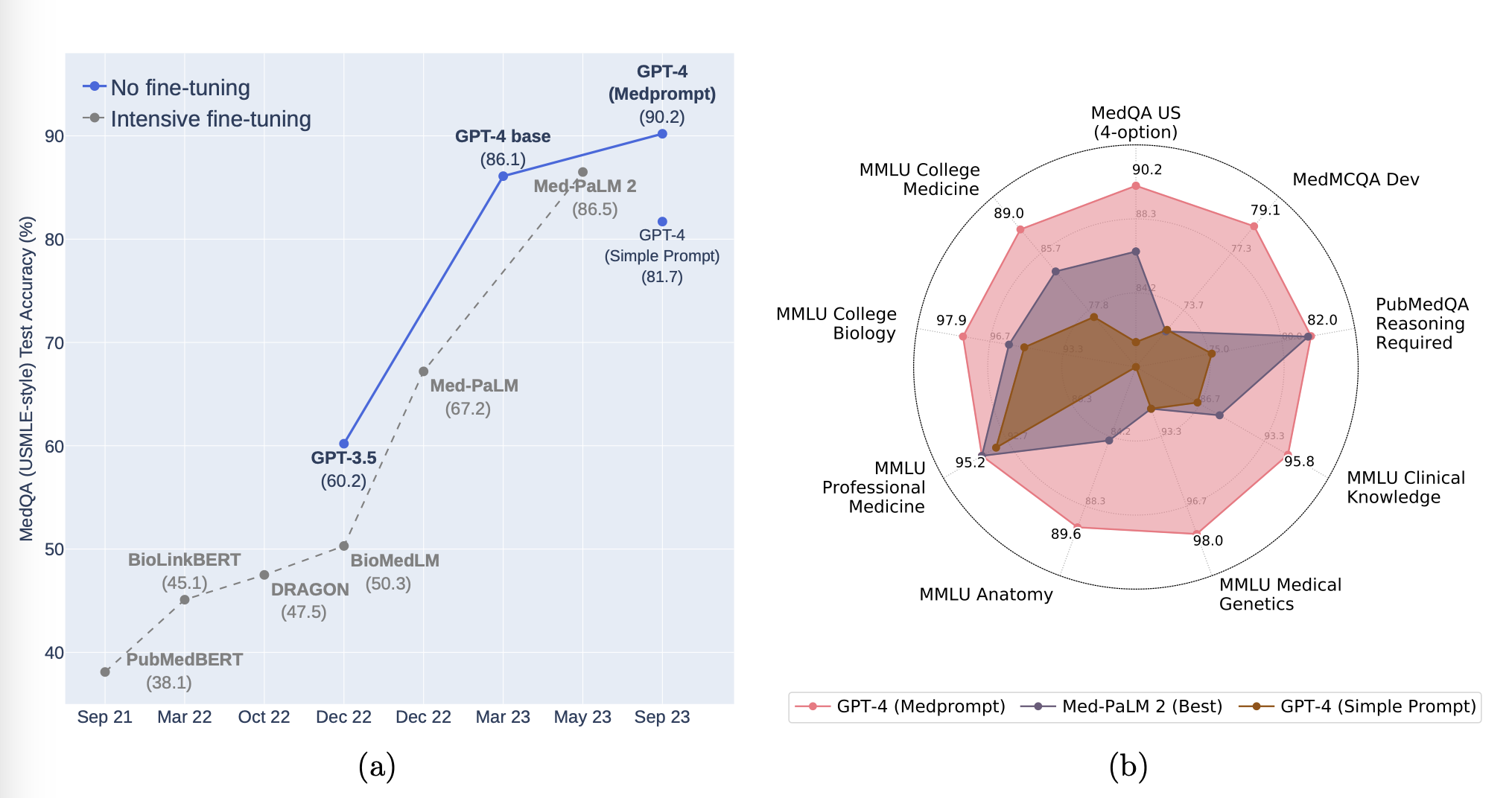
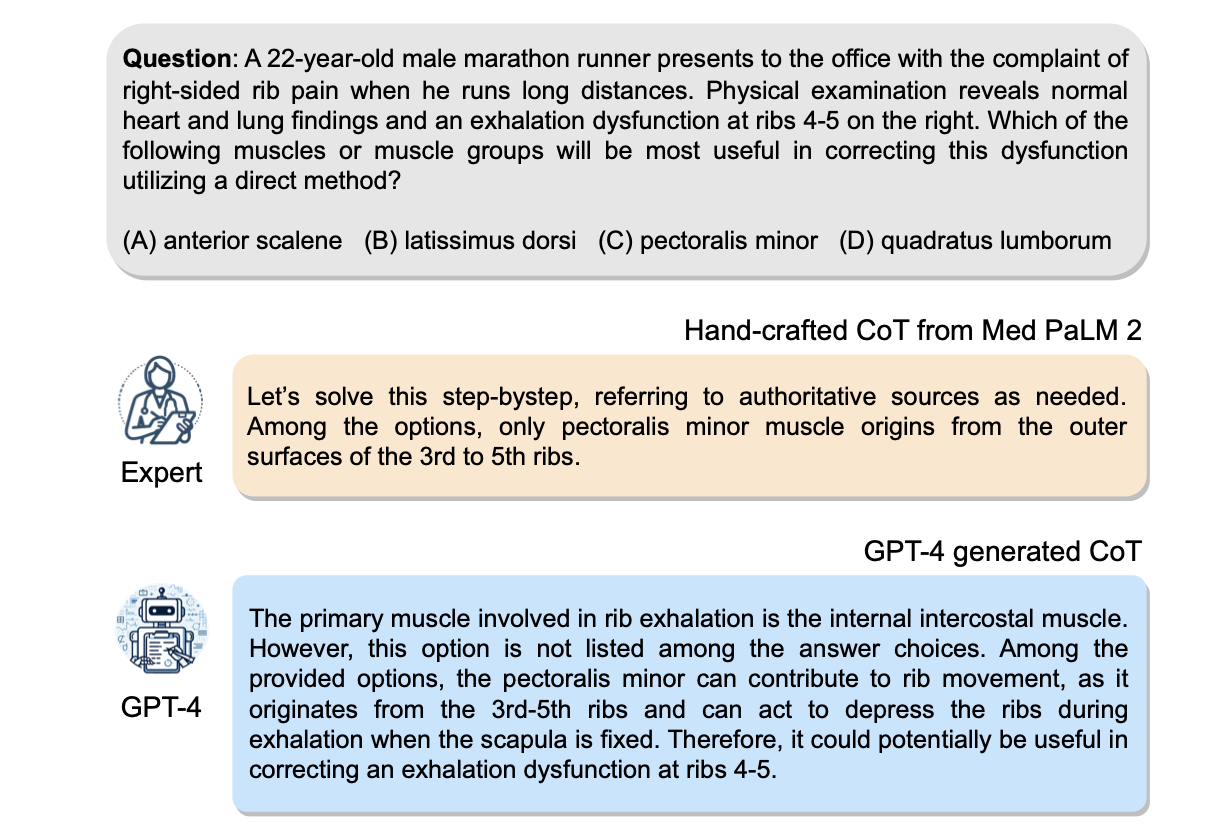
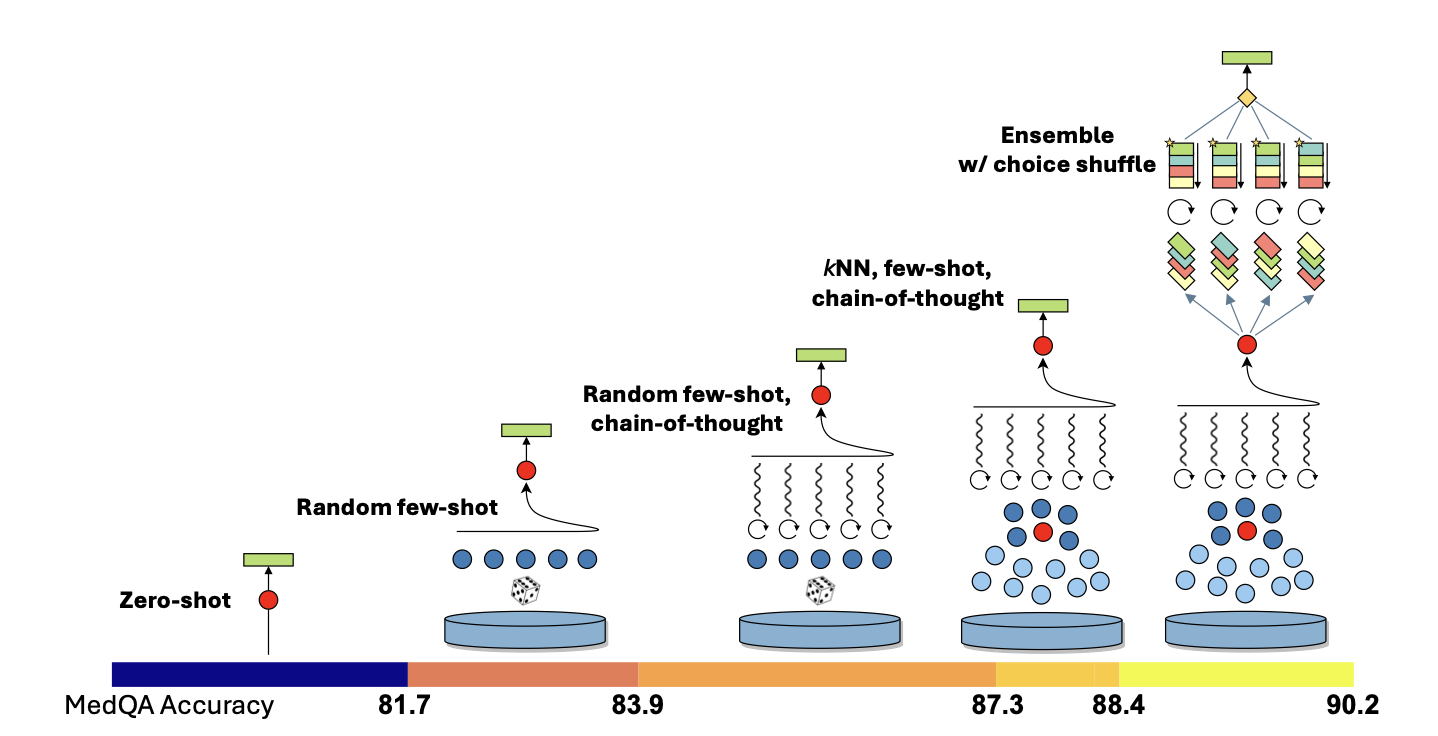
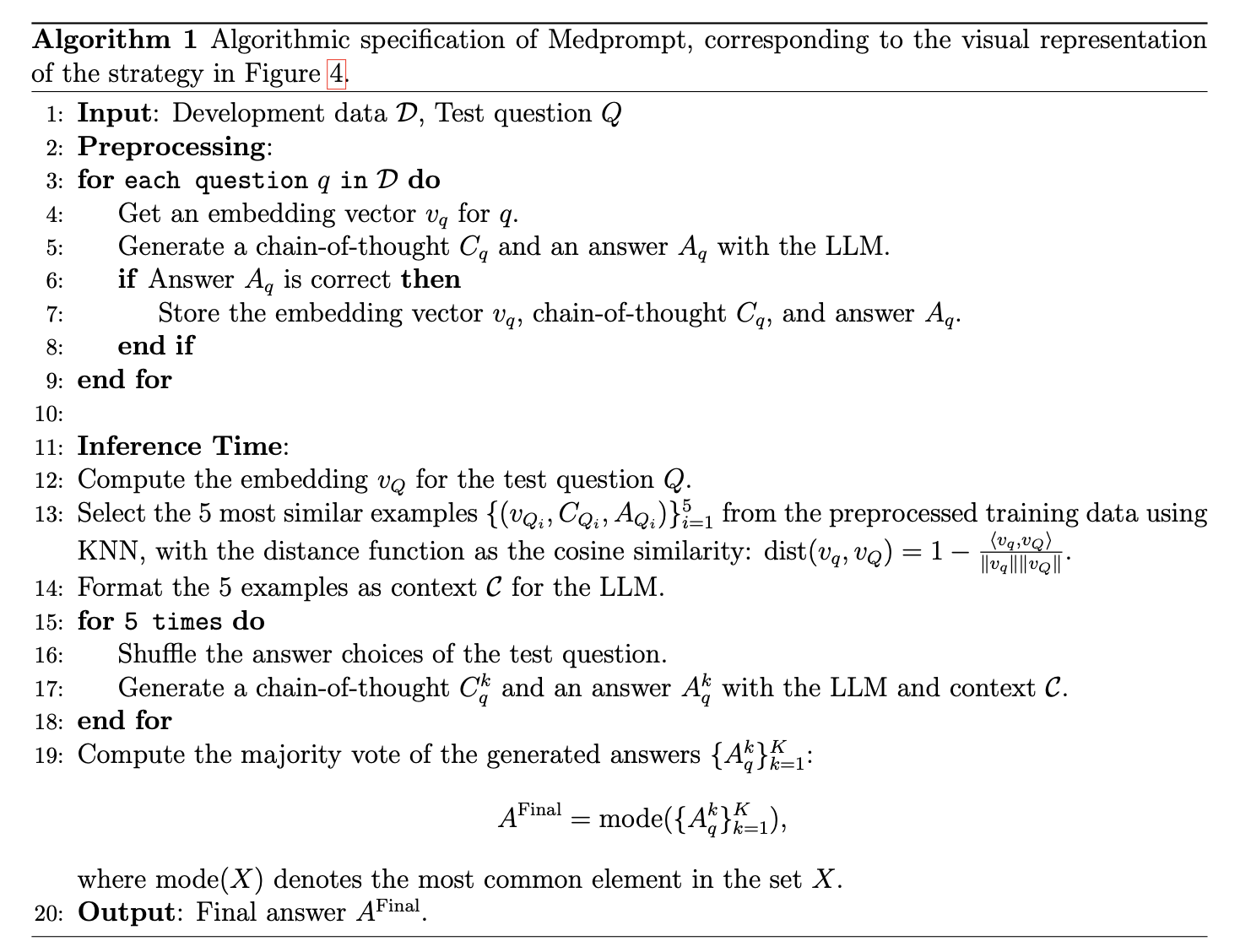
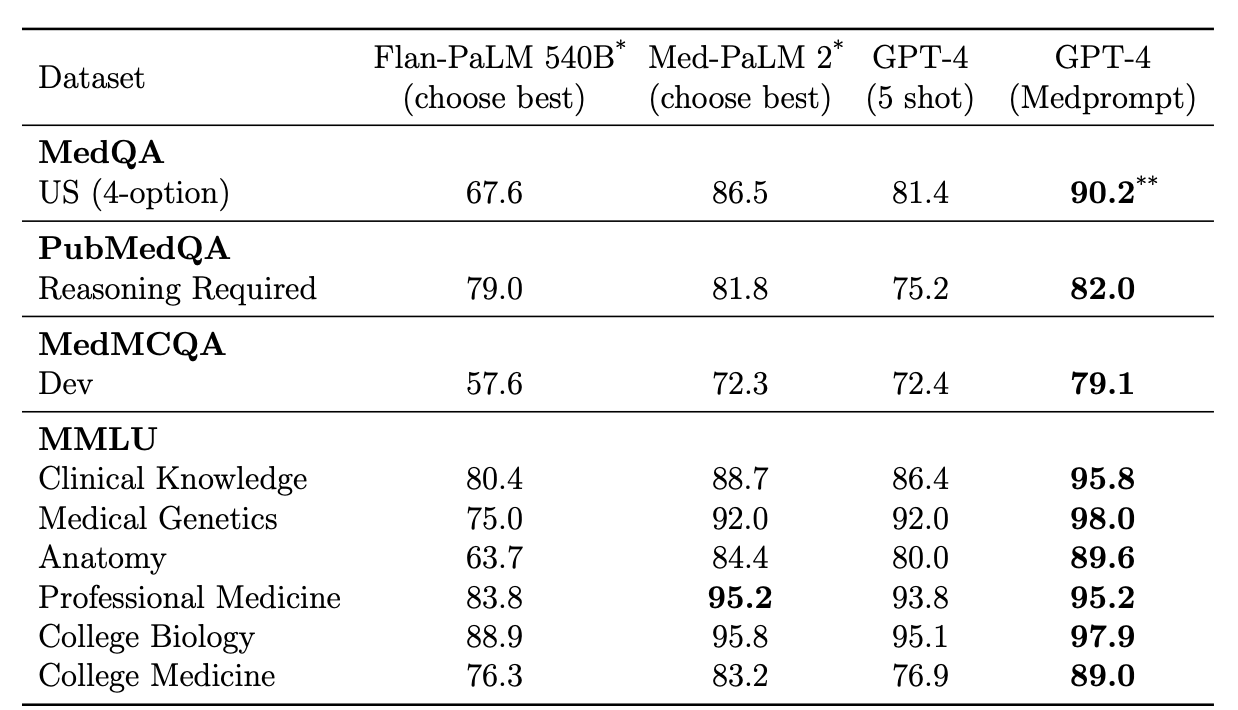
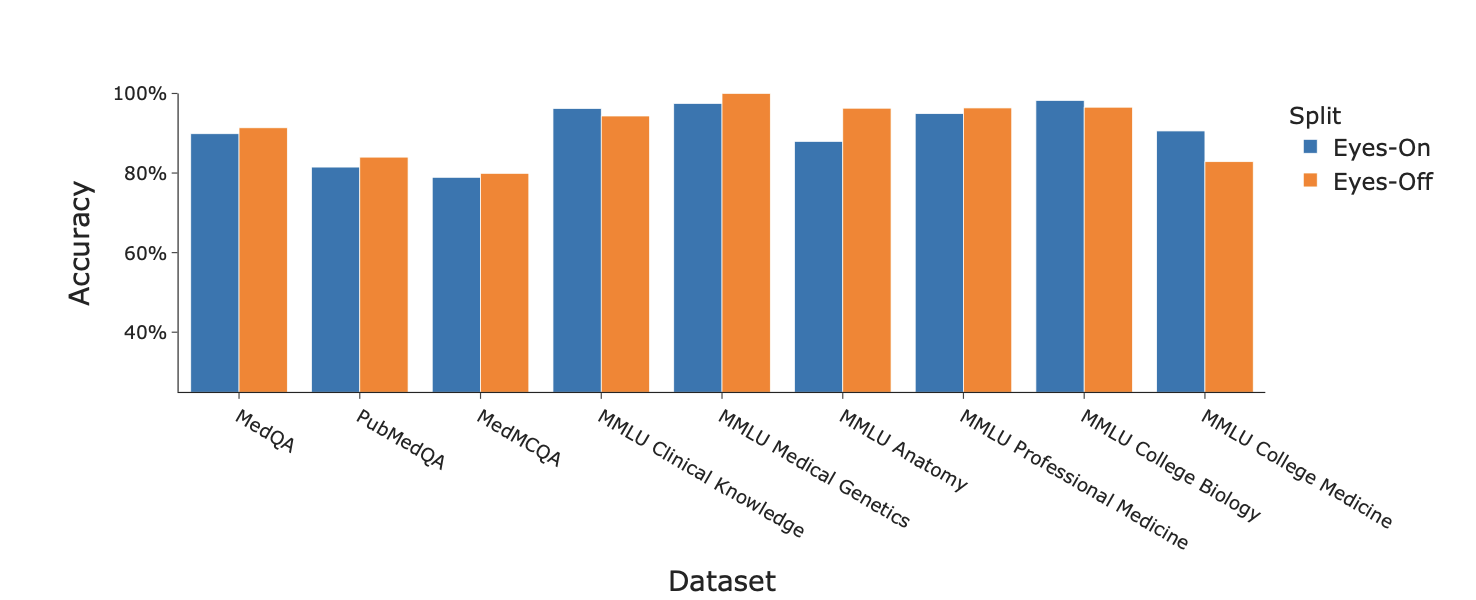
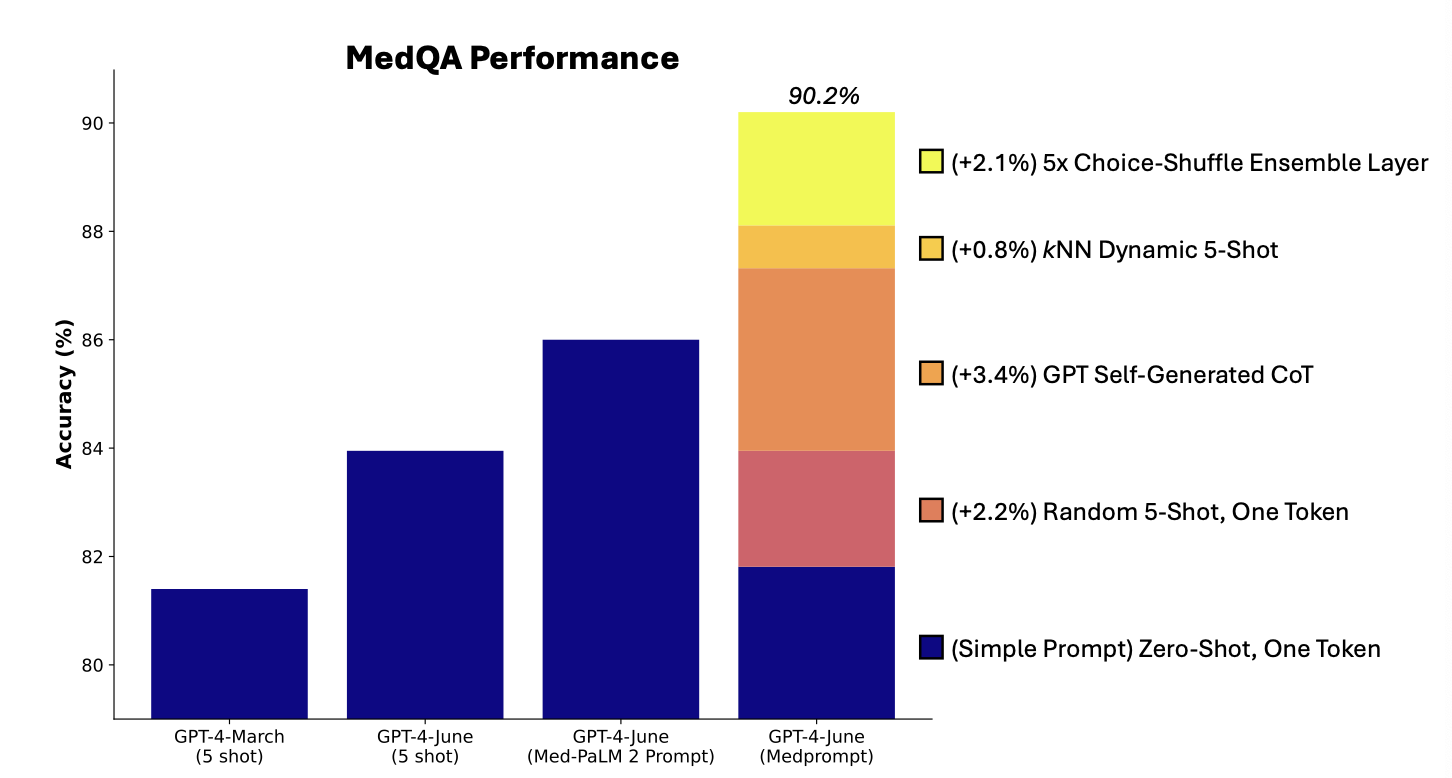

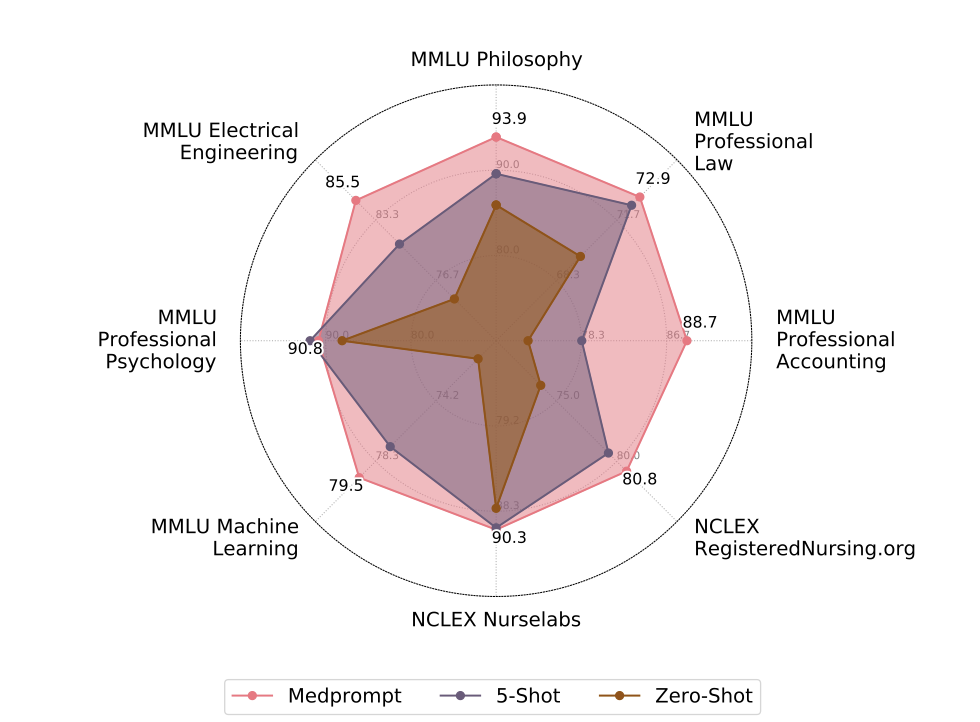
Comments powered by Disqus.